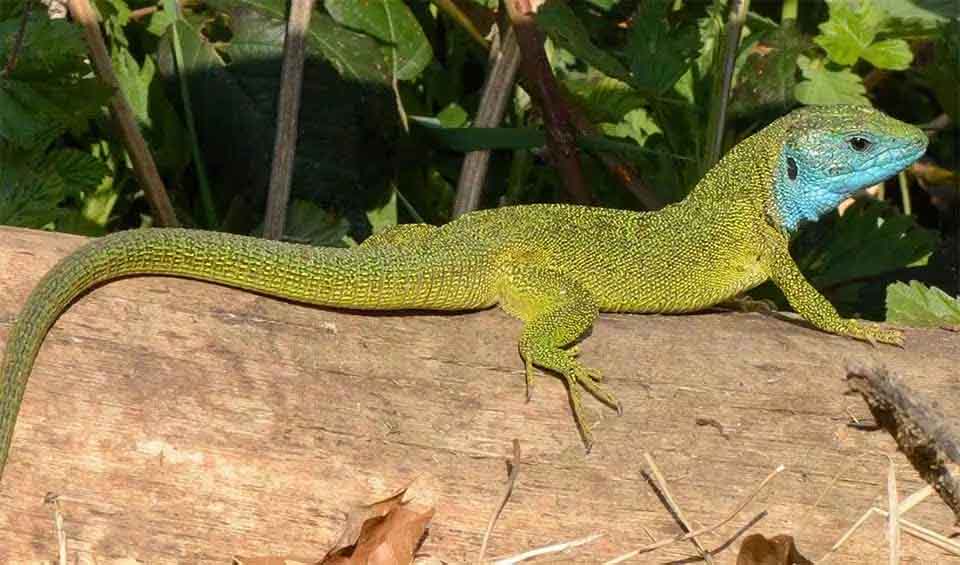One of the most distinctive features of the European green lizard is its color. Males are especially vibrant, boasting a brilliant green back and sometimes even blue throats and bellies during the mating season, which add to their allure and visibility. Females, while also green, are usually a bit more subdued in color and may have a series of dark stripes or spots, which help with camouflage. The contrast in coloration between the sexes is a prime example of sexual dimorphism, where males and females of the same species look different from one another.
This lizard is relatively large compared to other species within its genus. The body is robust and muscular, enabling it to move swiftly when chasing after prey or escaping predators. The European green lizard is a proficient climber and can often be spotted scaling trees, walls, and fences, although it spends much of its time on the ground amid grasses and shrubs.
Diet-wise, the European green lizard is insectivorous, primarily feeding on a variety of insects and other small invertebrates. Its diet helps control the populations of these smaller creatures, highlighting its role as a natural pest controller. During hunting, it relies on its excellent vision and quick reflexes to snatch up prey with a sudden burst of speed, using its strong jaws to secure a meal.
A fun fact about the European green lizard is its ability to drop its tail when threatened—a defense mechanism known as autotomy. The tail, once detached, continues to twitch and wriggle, often distracting the predator long enough for the lizard to escape. The tail will regrow, but it takes time and considerable energy, and the new tail may not match the color or length of the original.
Distribution
 Albania
Albania Austria
Austria Bosnia And Herz.
Bosnia And Herz. Bulgaria
Bulgaria Croatia
Croatia Czechia
Czechia Germany
Germany Greece
Greece Hungary
Hungary Italy
Italy Moldova
Moldova Montenegro
Montenegro North Macedonia
North Macedonia Poland
Poland Official estimate
Official estimate
 Romania
Romania Serbia
Serbia Slovakia
Slovakia Slovenia
Slovenia Turkey
Turkey Ukraine
Ukraine United States
United StatesAnything we've missed?
Help us improve this page by suggesting edits. Glory never dies!
Suggest an editGet to know me
Terrestrial / Aquatic
Altricial / Precocial
Polygamous / Monogamous
Dimorphic (size) / Monomorphic
Active: Diurnal / Nocturnal
Social behavior: Solitary / Pack / Herd
Diet: Carnivore / Herbivore / Omnivore / Piscivorous / Insectivore
Migratory: Yes / No
Domesticated: Yes / No
Dangerous: Yes / No




